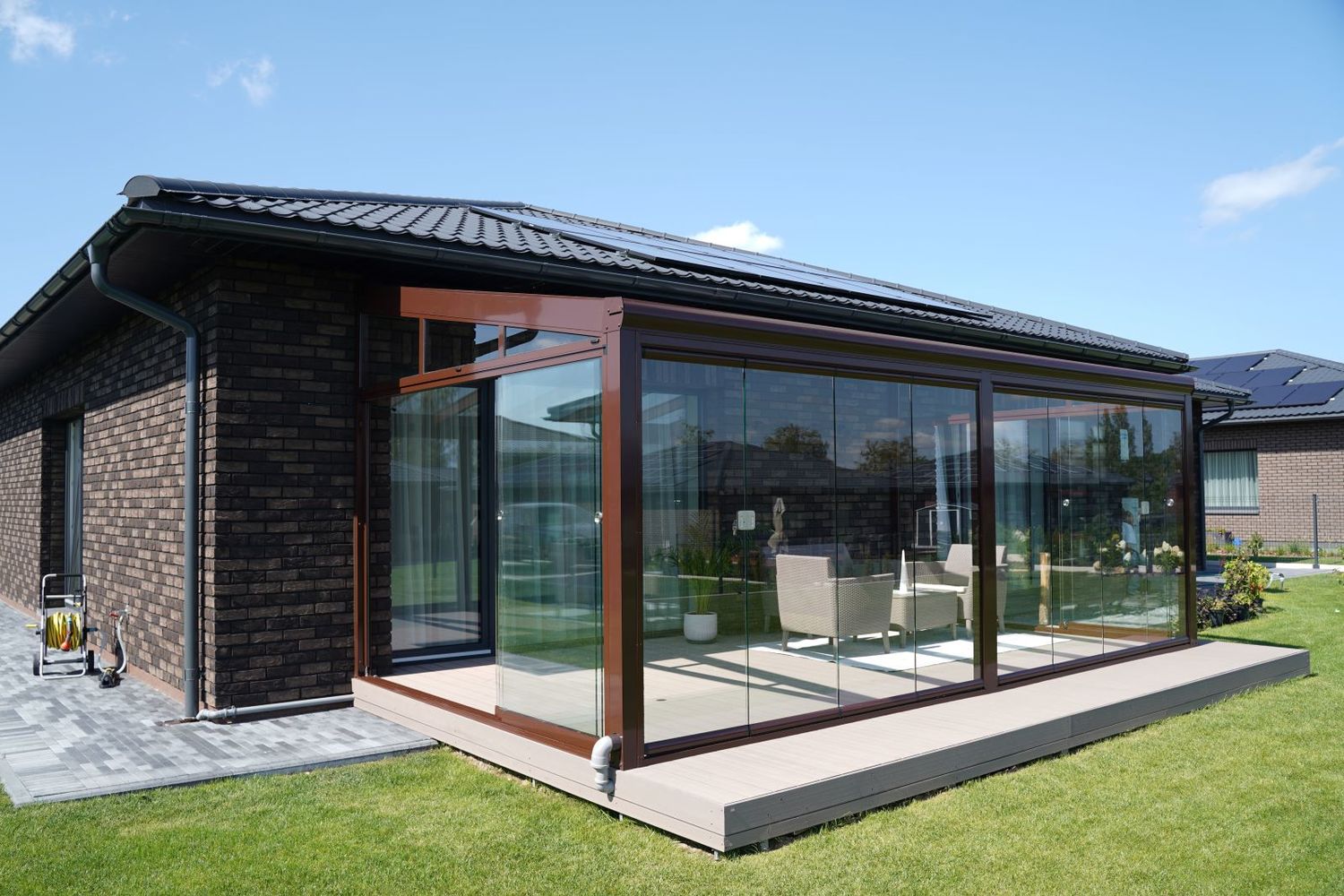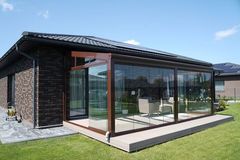During the creation of this film about terrace glazing, several visits were made to the premises of the company "Intornas" UAB. The first visit took place when the terrace roof was being installed. Later, glass panels, custom-made to fit the roof’s dimensions, were installed, completing the terrace glazing. "Intornas" introduced a new terrace glazing system, and the film provides a detailed demonstration of the process. Although the installation process is shown in detail, "Intornas" UAB specialists do not recommend attempting DIY installation of glazing. This film is intended to help viewers assess whether such a solution is suitable for their terrace.
Terrace glazing is carried out in several stages. First, it’s essential to assess how the terrace will blend with the house and surroundings. It’s also crucial to choose the right floor and roof colors and decide on the type of glazing. Terraces can be glazed using framed or frameless systems, with the latter offering a more modern visual appeal, and there are various types of frameless systems.
The terrace construction begins with reliable foundations, as the aluminum structure of the roof is relatively heavy, and snow accumulation in winter can add extra load. Today, pile foundations are most commonly used, on which aluminum profiles are installed in two rows. WPC (wood-plastic composite) boards are typically used for terrace flooring.
After installing the terrace, the need often arises for protection from rain or sunlight. Initially, awnings are often chosen, but over time, many realize that a permanent roof is a more reliable solution. It is recommended to choose an aluminum roof with tempered glass panels right from the start. "Intornas" UAB offers roofs with integrated gutters, which are not only practical but also aesthetically pleasing. The color of the structure can also be chosen according to the RAL color chart. For more detailed information or consultation, you can contact "Intornas" UAB representatives by clicking on the terrace glazing link.
Naturally, the need for glazing the terrace itself often arises. A glazed terrace provides protection from wind, and in the spring, it acts as a barrier against mosquitoes. On milder days, the glass panels can be opened to enjoy fresh air. Frameless terrace glazing is particularly popular, as it blends seamlessly with the surroundings.
The film introduces an innovative frameless glazing technology that uses a sliding and folding system. The glass panels are attached to the top profile, with a minimal guide profile at the bottom, which does not obstruct walking. When the panels are pushed together, they fold, creating a fully open space. This system was installed to glaze the front of the terrace.
The sides of the terrace were fitted with a sliding frameless glazing system, which features a low-profile bottom rail with tracks. The movement of the glass is ensured by the lower track, while sealing is maintained with a special sealing profile with brushes.
The price of terrace glazing depends on individual needs and project specifics. Intornas offers terrace glazing services throughout Europe for large projects. For more detailed pricing information, contact "Intornas" UAB specialists via the provided links. Terrace glazing


